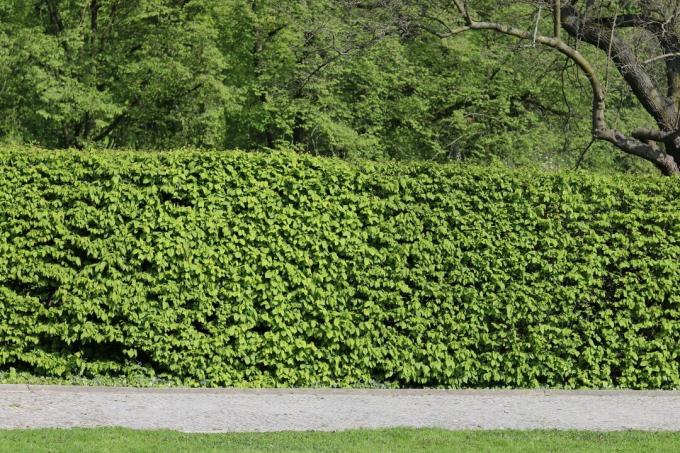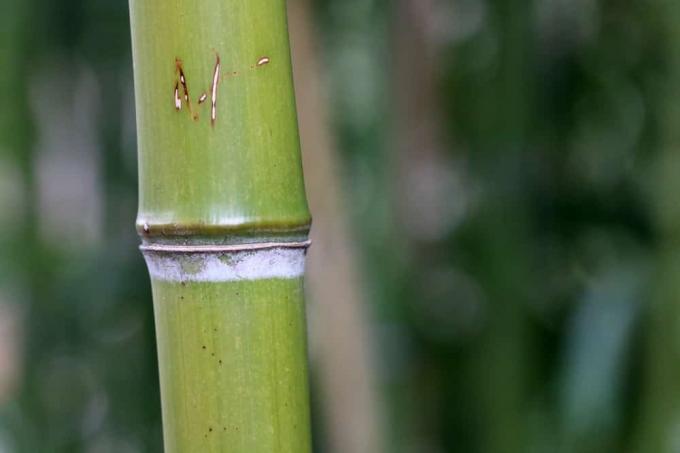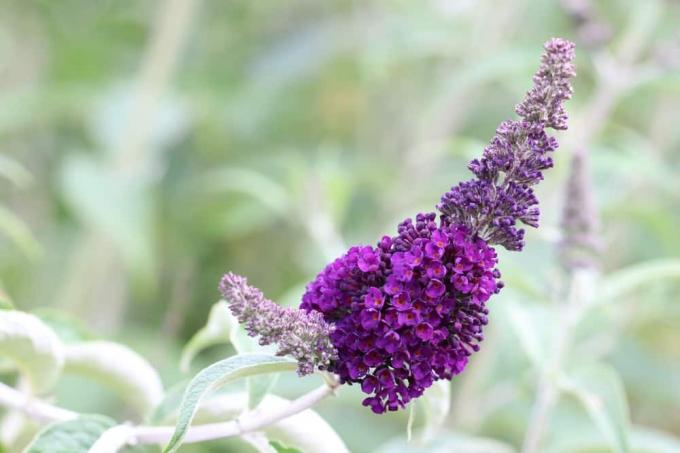

Table of contents
- Care
- crop
- The work of art among the hedges and trees
- The best conditions for the tree of life
- useful information
Thuja Plicata, giant tree of life - care The giant tree of life is often planted in gardens as an opaque hedge and enclosure of the property. Since it is a hardy and evergreen plant, it is not surprising that it is often used as a hedge plant. The enormous growth height and growth density also make their contribution here and are reasons that speak in favor of the easy-to-care-for and always beautiful giant arborvitae Thuja Plicata. It looks compact, young and fresh. This plant can be pruned to the desired shape or height by the gardener, but can also be left in its natural state. Despite the decision for uncontrolled, natural growth, it is necessary to prune the giant arborvitae more often and, above all, to remove dried shoots and brown tips.
Care
At first glance, the plant, with its glossy, rich green-colored leaves, might be mistaken for a plant that thrives best without the need for maintenance. The assumption is based on the fact that the giant arborvitae, if it is not planted as a hedge in the garden, is often left in a wild form and is not cut into a cultivated form. However, behind the apparent wild growth there is already a care that is important and necessary for the healthy and fresh appearance of the tree of life. If you simply let the giant tree of life grow unrestricted, you give it the opportunity to achieve a growth height of up to 15 meters. Deciding on a location for Thuja Plicata is not difficult, as the tree thrives on any surface and does not make high demands. A location that is sunny or semi-shady and with a nutritious and deep garden soil is preferred. Tree care includes:
- the sufficient planting distance to neighboring plants
- plenty of water during growth
- regular pruning, or the removal of brown shoots
- Cut only on rainy days and in cool temperatures
- check for pests and diseases.
Brown areas in the lush green of the giant arborvitae are often evaluated by the gardener as drought damage and blamed on insufficient irrigation water or too much sunlight. However, not only the drying out of the soil, but also waterlogging lead to visual drought damage and can produce brown spots in the otherwise green color of the leaves. With the giant tree of life, it is noticeable that pathological damage usually affects not just a small shoot, but a larger area of the plant and should be cut out generously.
crop
Depending on how it is used in the garden, the giant arborvitae can be pruned in a straight form as a hedge, or as a solitary tree that rises to a point and tapers towards the top. Even if the gardener does not want to influence natural growth and encourage wild growth, garden shears are among the tools that are necessary for optimal care. Despite pruning, the wild growth can be preserved if the gardener:
- removed only damaged brown shoots
- does not work on shape when trimming
- supports the natural growth with its trimming
- and there is enough space for wild growth.
Ideally, the giant arborvitae is pruned between August and September. The gardener should not choose a sunny day for this. The freshly cut wounds could be damaged in high sun exposure and lead to renewed brown spots. Depending on where it is used and the space in the garden, Thuja Plicata can be cut generously or strictly according to the requirements, such as a hedge. The cut is preferably designed in a trapezoidal shape, as this has a positive effect on the appearance and growth of the tree of life. The cut serves not only the desired shape, but is necessary for the full and dense growth of the tree. This is also the reason why natural growth should be favored with occasional cutting of the shoots. If you cut it twice, choose early summer for the first care of the year. The months of June and July are particularly suitable here and also come up with cool and damp days, which are ideal for cutting the giant tree of life. Pruning outside of the intervals is urgently needed if the tree is infested with pests. Here it is not advisable to wait until early summer or autumn, as the damage could spread and affect the entire tree.
The work of art among the hedges and trees
Thuja Plicata is known for its numerous possibilities, not just simply cut into shape, but also formed into artistic figures. It doesn't always have to be the straight or trapezoidal cut. Who planted the tree of life, for example, free-standing in the garden or as a border of his seating area can implement many creative ideas and design artistic figures with the trimming of the hedge. Geometric shapes, but also animal figures or letters can be easily designed due to the dense growth and provide a very special magic in the garden. However, very difficult figures are not recommended for beginners, since the hedge is easy to move shape, but if you cut it wrong, you won't be able to bring it back into a respectable format so quickly leaves. The gardener believes that the cut-out required for letters or a section of longer branches is not a problem either to the basics of pruning and chooses a cool, rainy, or at least non-sunny one that is best for his work Day.
The best conditions for the tree of life
The giant arborvitae is very undemanding and thrives even if the conditions are not ideal. In order to promote fast and full growth, however, the gardener should already follow recommendations when choosing a location and caring for it pay attention to a nutrient-rich soil without waterlogging, as well as a sunny to semi-shady place in the garden decide. The requirements cannot always be met, especially when the giant arborvitae serves as a fence around a property. Here the cut is based on the spot with the smallest growth.
useful information
Thuja Plicata makes no demands on its location. He also tolerates shade. Cool, humid areas with deep and slightly acidic soils are preferred. The giant arborvitae has a shallow, far-reaching root system and is therefore endangered by windthrow.
Thuja Plicata is the fastest growing thuja species. The growth is compact and conical. The needles are deep green. The branches are arranged at right angles. The lowest, ground-lying branches take root and form surrounding small ones in the area of the mother plant Plants (trail formation). If you rub them between your fingers, they give off an intense pineapple scent. In winter it changes color only a little.
The flowering period is from April to May. The fruits are elongated cones, up to 1.8 cm long. First they stand upright, later they hang.
The planting distance if you use the Thuja Plicata as plant hedge should be 50 to 80 cm. A plant 40 to 60 cm high costs about 7 euros.
 garden editorial
garden editorial I write about everything that interests me in my garden.
Learn more about hedges

Hornbeam hedge: 17 tips for care
Hornbeams (Carpinus betulus) are most commonly used as topiaries or hedge plants. They are actually not beeches at all, but belong to the birch family. The hornbeam is very robust, easy to care for and, in contrast to the common beech, not poisonous.

How fast does bamboo grow? | Information about growth
In domestic gardens, bamboo is usually used as a privacy screen or as a decorative solitary plant. The rapid growth, which can reach several cm a day, is impressive. It depends on the bamboo variety, care and the prevailing microclimate.

How fast does cherry laurel grow? | accelerate growth
The cherry laurel is a fast and densely growing tree. After planting, it usually only takes a few years for the young plants to grow into a tall, dense and evergreen hedge. In addition, growth can be accelerated by additional precautions.

Creating a mixed colorful hedge: 9 ideas for a mixed hedge
If you don't like it monotonous, you can also create a mixed hedge instead of a hedge from a single, evergreen plant species. There is a wide range of colorful hedges to choose from. There are special flowering hedges, ones for birds, scented ones, or for insects and butterflies.

Yellow cypress | 9 tips for care, pruning & growth
The yellow cypress is one of the most common hedge plants in our gardens. No wonder: it combines a great look with an opaque growth. How to properly care for them, cut them and generally promote their growth is here.

Thuja brabant turns brown or yellow: what to do? 8 common causes
When Thuja brabant turns yellow or brown, various factors can be responsible - but care mistakes are often the trigger. We reveal which factors are involved and how they can be counteracted.



